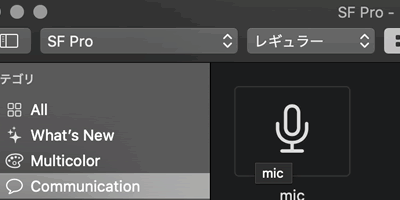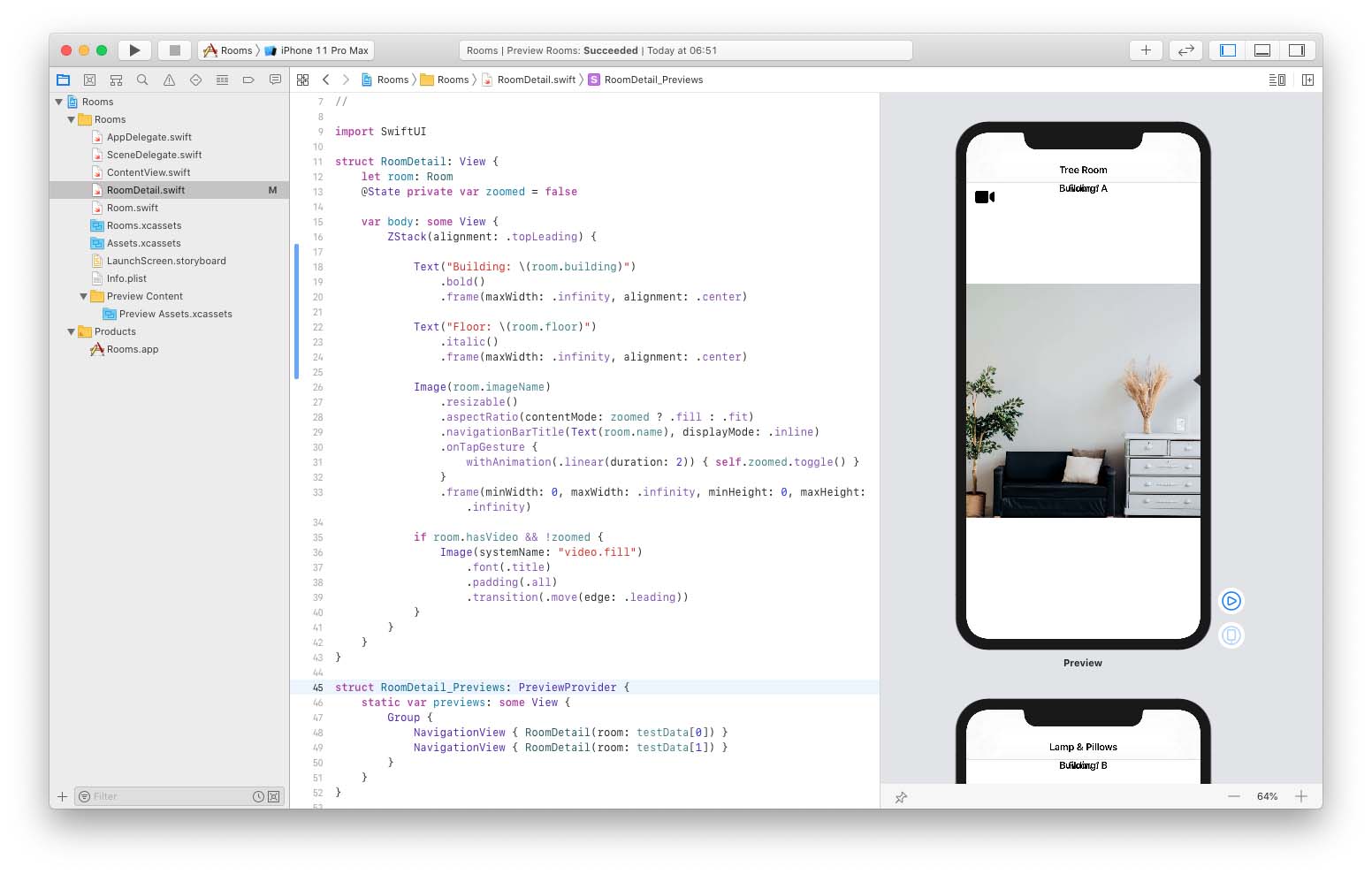

you can apply any ShapeStyle with foregroundStyle(_:), not just color: e.g.regularMaterial to blur the background behind a symbol.black), the second color will be applied to both secondary and tertiary levels when you declare only two styles, e.g.foregroundStyle(.white.you can specify up to three styles to control each level of the symbol (one for each level of the hierarchy).use foregroundStyle(_:) to use the palette rendering The image that is instantiated directly with Image(systemName:) is rendered correctly, while the one instantiated with Image(uiImage:) is stretched horizontally, as seen here.new symbolRenderingMode(_:) to pick which rendering our symbols should use.palette - allows maximum control over the coloring of the layers of a symbol.hierarchical - uses the current foreground style to apply a single color to the symbol, but also adds multiple levels of opacity, to emphasize the key elements of the symbol.
 If a symbol doesn't have a multicolor representation, it will fall back to the monochrome rendering mode. multicolor - to show colors for what each symbol represents. monochrome - to have a constant tint on the whole symbol. Label( "Queen of Hearts", image: "queen.heart") Label( "Ace of Diamonds", systemImage: "suit.diamond") Label( "Ace of Spades", systemImage: "suit.spade") Label( "Ace of Hearts", systemImage: "suit.heart") new symbolVariant(_:) view modifier to set the variant to use. variants (NEW) - if we use the base symbol, Label will automatically pick the right variant, like outlined or fill, based on the context (e.g. Instead of passing the name of an asset to the Image(), system symbols can also be used. you can change just he Label image by using the imageScale(_:) view modifier:. if you choose a fixed size, then they stay constant. caption then the text and symbol will scale with dynamic type You can set the foregroundStyle(_:) to a specific color, or to more semantic values, like the current tint or secondary style:. By default SwiftUI uses the Monochrome rendering, which default to black or white in light mode or dark mode. for custom symbols, you can provide a localization string for the symbol name (or use the accessibilityLabel modifier above). you can use accessibilityLabel("description") to provide that information. sometimes SwiftUI provides a label based on a system symbol's content. Label is great for accessibility, as the Label's text will be read. a Label is a general description of this text + image pairing and will adapt its behavior to the context where it's shown: sometimes the image will be shown first, sometimes second, sometimes the text is hiddenģ others \(Image(systemName: "chevron.forward")). We’ll also take you through the latest updates to symbol colorization and help you pick the right tool for your app’s needs. We’ll explore basic techniques for presenting symbols, customizing their size, and showing different variants. So how does the toggle run? In a button, making toggle the action and make the image the label for the button.Description: Discover how you can incorporate SF Symbols into your SwiftUI app. So anytime toggle runs, the image will change. Not only can you change it, but any change to it updates the view. In SwiftUI placing an image next to text is done like this: Label('Please try again', systemImage: 'xmark. That makes this variable a state variable. But you can change them by adding infront of the var. I could write a function toggle like this: func toggle()īut that gives me an error. I would have to change the parameter to do that, and I could only do that once for a given checkbox. Now if false I get a square, and if true I get a checked square. I can re-write the Image like this Image(systemName: isChecked ? "checkmark.square" : "square") In SwiftUI we avoid if.then.else control structures and defer to conditional operators. The checked square is simply the word checkmark before the square. I can use the Image object in SwiftUI with the systemName parameter to get a SFSymbol from SwiftUI. I made a second struct CheckView for the checkbox. Open up the project I have in the exercise files.
If a symbol doesn't have a multicolor representation, it will fall back to the monochrome rendering mode. multicolor - to show colors for what each symbol represents. monochrome - to have a constant tint on the whole symbol. Label( "Queen of Hearts", image: "queen.heart") Label( "Ace of Diamonds", systemImage: "suit.diamond") Label( "Ace of Spades", systemImage: "suit.spade") Label( "Ace of Hearts", systemImage: "suit.heart") new symbolVariant(_:) view modifier to set the variant to use. variants (NEW) - if we use the base symbol, Label will automatically pick the right variant, like outlined or fill, based on the context (e.g. Instead of passing the name of an asset to the Image(), system symbols can also be used. you can change just he Label image by using the imageScale(_:) view modifier:. if you choose a fixed size, then they stay constant. caption then the text and symbol will scale with dynamic type You can set the foregroundStyle(_:) to a specific color, or to more semantic values, like the current tint or secondary style:. By default SwiftUI uses the Monochrome rendering, which default to black or white in light mode or dark mode. for custom symbols, you can provide a localization string for the symbol name (or use the accessibilityLabel modifier above). you can use accessibilityLabel("description") to provide that information. sometimes SwiftUI provides a label based on a system symbol's content. Label is great for accessibility, as the Label's text will be read. a Label is a general description of this text + image pairing and will adapt its behavior to the context where it's shown: sometimes the image will be shown first, sometimes second, sometimes the text is hiddenģ others \(Image(systemName: "chevron.forward")). We’ll also take you through the latest updates to symbol colorization and help you pick the right tool for your app’s needs. We’ll explore basic techniques for presenting symbols, customizing their size, and showing different variants. So how does the toggle run? In a button, making toggle the action and make the image the label for the button.Description: Discover how you can incorporate SF Symbols into your SwiftUI app. So anytime toggle runs, the image will change. Not only can you change it, but any change to it updates the view. In SwiftUI placing an image next to text is done like this: Label('Please try again', systemImage: 'xmark. That makes this variable a state variable. But you can change them by adding infront of the var. I could write a function toggle like this: func toggle()īut that gives me an error. I would have to change the parameter to do that, and I could only do that once for a given checkbox. Now if false I get a square, and if true I get a checked square. I can re-write the Image like this Image(systemName: isChecked ? "checkmark.square" : "square") In SwiftUI we avoid if.then.else control structures and defer to conditional operators. The checked square is simply the word checkmark before the square. I can use the Image object in SwiftUI with the systemName parameter to get a SFSymbol from SwiftUI. I made a second struct CheckView for the checkbox. Open up the project I have in the exercise files. 
However, as a bit of a intro to the philosophy of SwiftUI, let look at creating a checkbox. There is a way to make a checkbox with a Toggle control. One missing control is old fashioned checkbox like I have on the web or on my Mac.







 0 kommentar(er)
0 kommentar(er)
